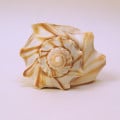How to Write an Essay: Four Ways to Organize an Essay

Why You Should Take the Time to Organize Your Essay
Deciding how to organize your essay may seem tedious, but it's well worth the extra effort you'll put it in. It's like deciding where your socks and towels are supposed to go when put them away--if you know where they belong, it's a heck of a lot easier to finish the task of putting away the laundry. But if you don't know where they go, well, they'll probably stay right there in your laundry basket and you'll waste time every day looking for a matching pair.
You may think to yourself, "I already know exactly what I want to say," which is a great start--but it's probably not as true as you want it to be. You might know what topic you want to cover and what point you want to make, but the key is figuring out how to say it.
Creating a Lens for Your Essay: Using Opposites
This article describes four ways to organize an essay. Each different method is based on the belief that there are opposites involved with every topic. What that means is that every good essay should show the complexities of a topic by addressing both or all sides of it, whether it be an issue, a description, a persuasive essay, or an informative piece. Using opposites gives your piece a lens through which you present the material. The "lens" can also be interpreted as an "angle of vision" or, simply, an "angle".
Obviously, the subject matter is going to vary. However, the idea that there are opposites within each topic usually holds true. Essays generally explore the relationship between these opposites, whether overtly or implicitly. (See the chart below for examples of types of opposites.)
Also obviously, these are not the ONLY four ways to structure an essay. However, these four methods can help guide you.
Types of Opposites in an Essay
Angle A
| Angle B
|
|---|---|
Bad
| Good
|
Old
| New
|
Pros
| Cons
|
Negative
| Positive
|
Right
| Wrong
|
Half and Half
The Half and Half essay presents the information in two parts. The first part is the bad (or old or negative, etc.) and the second part presents the good (or new or positive, etc.). This type of essay is useful for essays that present a change from one thing to another, such as an informative essay about the change from using horses for transportation to using cars. In that example, horses are "old" and cars are "new." It might also be useful for an essay in which the author tries to refute a long-held philosophy. For example, the author might say, "For many years, studies showed that caffeine is a bad drug, but recently, studies have proven that caffeine is actually good." The first half of the essay could be dedicated to studies that showed caffeine as a bad thing.
Ping Pong
Some topics might require a discussion of individual opposing factors, not just an overall discussion of opposing issues. Each point might have a counterpoint, and presenting it using a Ping Pong structure would be effective. With this structure, the author presents Factor A and its opposite, then presents Factor B and its opposite, and so on. This back-and-forth structure gives it its name.
The Swirl
The Swirl structure is similar to the Ping Pong structure, but it may contain two or three opposing factors in each paragraph. This method would be the most effective with short essays.
The Bookends
The name "The Bookends" refers to the Introduction and Conclusion portions of the essay. This method is also useful for refuting popular notions. Using a Bookends structure is good if most of the information in the essay revolves around one idea, but that idea gains power because of its opposition to another, often more popular, idea. For example, in an essay with a thesis that states, "Many people believe plastic surgery is purely cosmetic, but in many cases, plastic surgery has a medical purpose," the writer would include information about cosmetic plastic surgery in only the introduction and conclusion (and maybe allude to it in the body paragraphs). The author would start by presenting the two opposite ideas and then bring closure to the essay by presenting those two opposite ideas again.



